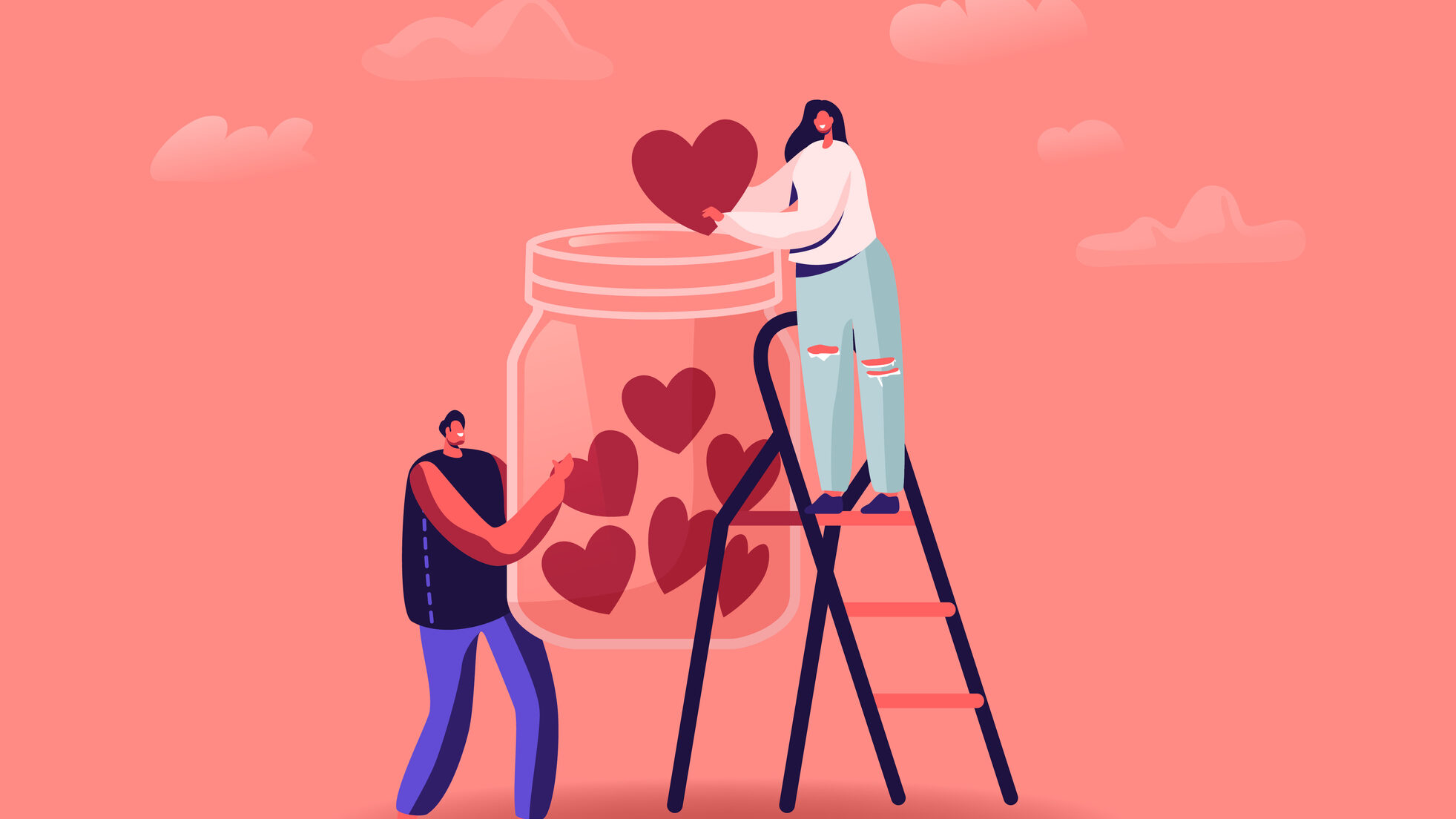Before he played Walter White, actor Bryan Cranston played the lothario dentist Tim Whatley on NBC’s “Seinfeld”. While little about Whatley is realistic, the character touches on mental health issues in the dental profession; namely, the stereotype that dentists have the “highest suicide rate of any profession.”1
Even though this is an urban legend, “Seinfeld” captured a major issue in the dental profession: as detailed in a study from the United Kingdom, dental practice is associated with high overall stress levels resulting in dentists experiencing depression, fatigue and burnout.2
Throughout the COVID-19 pandemic, discussions concerning the mental health of other frontline healthcare workers have been pervasive. Yet, when dentists were designated as essential service providers offering urgent and emergency care services in high-risk situations, their mental health struggles were hardly considered.3
Why is no one talking about dentists?
This article first explores some of the unique stressors that dentists face in their everyday practice that contribute to mental health issues. We then shift gears to examine some of the specific challenges faced by dentists during the COVID-19 pandemic, and how they ought to shape the discussion of dentist mental health. Finally, we explore strategies for dentists to manage these challenges and navigate these complex issues.
The stress of dental practice
Dentistry is stressful. A study of more than 3500 dentists found that 38 percent of them described themselves as always or frequently being worried or anxious.4 A large and comprehensive qualitative study of dentists from the United Kingdom identified several features of dental practice that contributed to high levels of stress and other mental health issues for dentists.5
While some stressors dentists face may be attributed to personality traits common among dentists, the study identified the largest causes of stress to be associated with working in a dental practice itself, including:
Work conditions: dentists have extremely busy, high-pressure jobs where mistakes could have serious implications for patients and for their own professional careers. The “daily grind” of dentistry can therefore be very stressful.
Social isolation: dental practice is not, in general, a social experience, and dentists have expressed that the profession can be a lonely one.
Regulation and litigation: the landscape and fear of regulation and litigation means that dentists experience high levels of emotional distress. They expressed that coping with regulation (and regulatory changes) can be stressful and leads to a constant fear of litigation, both from patients and from regulatory authorities.
Challenges specific to dentists during the COVID-19 pandemic
Dental practice during the pandemic was unquestionably difficult. The isolation, financial impact of shutdowns, and restrictions on dental practices augmented the normal stresses of everyday dental practice. Dentists operated in various restricted capacities when they were not completely locked down. When they were able to practice, they were subjected to an ever-evolving – and often inconsistent – regulatory climate. At the same time, they had to manage a contagion of risks for themselves and their families, employees and patients. These added stressors had detrimental impacts on the mental health of dentists.
During the pandemic, dentists experienced significantly higher levels of stress and anxiety relative to the general population.6 In the Canadian context, this can be attributed to:
Persistent fear of exposure: COVID-19 is transmitted most easily in short range through exposure to respiratory particles.7 No professionals faced the potential for prolonged exposure to COVID-19 at the peak of the pandemic more than dentists. The fear of contracting COVID-19 was extremely high in the dental profession: 85 percent of dentists in a province in Italy feared that they would become infected during clinical activity.8
Stricter PPE and IPAC protocols: Transmissibility concerns led to extensive in-office requirements for the use of personal protective equipment (PPE) as well as other ongoing Infection, Prevention and Control (IPAC) measures. These measures have been both financially and operationally challenging, and the mere sourcing of PPE sometimes created a barrier to practice.
Regulatory confusion: In Ontario, there have been inconsistent approaches to dental practice during the pandemic. In fact, regulations and guidelines became so inconsistent between the College of Dental Hygienists of Ontario (CDHO) and the Royal College of Dental Surgeons of Ontario (RCDSO) that, on June 1, 2020, the CDHO released a statement acknowledging its own struggle to keep up with, and understand, RCDSO changes.9 Inconsistent rules have also created unnecessary turmoil between dentists and dental hygienists within the same office. Ongoing changes to the regulatory landscape have created fear and anxiety for dentists over the high potential for complaints, disciplinary action and litigation that might result from unwitting failures to follow guidelines and regulations.
Mental health consequences and burnout
As a result of the stressors associated with dental practice, dentists’ mental health has been shown to be poorer than the general population with dentists experiencing, on the whole, higher levels of depression than other professional groups.10
As the stressors associated with practice have been exacerbated by the pandemic, so too have the mental health issues and challenges resulting from those stressors. A study of English dentists showed that, at the peak of the pandemic, 71 percent of dentists reported anxiety, 60 percent reported depression and 92 percent reported heightened stress levels.11
The challenges associated with the pandemic have also, anecdotally, resulted in an increase to the already high rate of burnout in the dental profession. Burnout in dentists has been shown to have three key characteristics:
- Mental and/or emotional exhaustion
- Depersonalization or dehumanization, meaning that the dentist develops a negative, indifferent or cynical attitude toward patients, clients, or co-workers
- Feelings of dissatisfaction with life and negative evaluations of self12
Burnout has also been associated with negative effects on personal relationships and overall wellbeing.13 Burnout can impact patient safety and have professional consequences: it has been associated with increased errors among U.S. dentists.14 As more dentists experience burnout symptoms from the ongoing pandemic, there will invariably be more errors leading to patient complaints, litigation and disciplinary proceedings.
The way forward
The COVID-19 pandemic has laid bare the need for increased dialogue surrounding mental health and wellbeing in the dental profession. Much like in the legal profession, while physical distancing and isolation persist, dentists don’t have to suffer alone. A more open dialogue and reduced stigma associated with mental health issues will lead to more dentists seeking help.
While there is no silver bullet to solve the mental health issues associated with dentistry, healthy practices including exercise, diet, good sleep hygiene and mindfulness contribute to general wellbeing. Dentists should not hesitate to seek help from appropriate health professionals where necessary, including from qualified mental health professionals. In situations where dentists notice professional colleagues struggling, they should not hesitate to intervene.
Dentists should also seek help from lawyers, accountants and professional mentors when they are uncertain about their practice or find themselves in difficult practice situations. This is especially important because practice issues like errors can lead to regulatory and other legal issues including complaints, fitness inquiries, disciplinary proceedings and civil litigation. These issues can create a feedback loop, causing additional stress, further disengagement, and additional legal and regulatory problems.
References
- Seinfeld, Season 8, Episode 19 – “The Yada Yada” (NBC: April 24, 1997).
- Myers, H.L. and Myers, L.B., “It’s difficult beng a dentist’: stress and health in the general dental practitioner”. British Dental journal, 2004: 197(2): 89-93.
- Vizheh M, Qorbani M et al., The Mental Health of Healthare Workers in the Covid-19 Pandemic: A Systematic Review, Journal of Diabetes and Metabolic Disorders, 2020: 19(2): 1967-1978; Lemieux‐Cumberlege, A. and Taylor, A.P. An exploratory study on the factors affecting the mental health and well‐being of frontline workers in homeless services, Health & social care in the community, 2019: 27(4): e367-e378.
- Rada, R.E. and Johnson-Leong, C., Stress, burnout, anxiety and depression among dentists. Journal of the American Dental Association, 2004: 135: 788-794.
- Larbie, J., Kemp, M. and Whitehead, P., The mental health and well-being of UK dentists: A qualitative study. British Dental Association, 2017 (https://www.bda.org/about-the-bda/campaigns/Documents/The%20Mental%20Health%20and%20Well-being%20of%20UK%20Dentists.pdf).
- Laureano, I.C.C., Farias, L. and Cavalcanti, A.L., Mental Health of Dentists during the COVID-19 Pandemic: A Critical Literature Review. (2020, pre-print), (https://preprints.scielo.org/index.php/scielo/preprint/download/1148/1729).
- Covid-19 Transmission Through Large Respiratory Droplets and Aerosols…What We Know So Far. Public Health Ontario, 20/05/21 (https://www.publichealthontario.ca/-/media/documents/ncov/covid-wwksf/2021/05/wwksf-transmission-respiratory-aerosols.pdf?la=en).
- Consolo U, Bellini P, Bencivenni D, et al., Epidemiological aspects and psychological reactions to COVID-19 of dental practitioners in the Northern Italy Districts of Modena and Reggio Emilia. Int J Environ Res Public Health. 2020;17(10): E3459.
- https://www.cdho.org/cdho-news/cdho-news-item/2020/06/01/regarding-conflicting-guidelines; note that the URL is specifically labelled “conflicting guidelines.”
- Cooper, C., Watts, J. and Kelly M., Job Satisfaction, mental health and job stressors among dental practitioners in the UK. British Dental Journal, 1987: 162: 77-81; Tyssen R. and Vaglum, P., Mental health problems among young doctors: an updated review of prospective studies. Harvard Review of Psychiatry, 2002: 10: 154-165.
- Ranka M. and Ranka S., Survey of Mental Health Dentists in the Covid-19 Pandemic in the UK, J Int Soc Prev Community Dentistry, 2021 Jan-Feb; 11(1): 104-108.
- Rada, R.E. and Johnson-Leong, C. Stress, burnout, anxiety and depression among dentists: Journal of the American Dental Association. 2004: 135: 788-794.
- Fenton, J.S., Burnout as a clinical entity: its importance in healthcare workers. Occupational Medicine (London). 1998: 48: 237-250.
- Yansane, A, Tokede, O et al. Burnout, Engagement, and Dental Errors Among U.S. Dentist. Patient Saf. 2020 April 3. Doi: 10.1097/PTS00000000000000673.
About the Author
 Jordan Glick is the founder of GlickLaw, a law firm focused on representing professionals, including dentists and dental hygienists, when complaints, disciplinary and licensing issues arise. Jordan was named to the Best Lawyers in Canada Directory in 2019, 2020 and 2021.
Jordan Glick is the founder of GlickLaw, a law firm focused on representing professionals, including dentists and dental hygienists, when complaints, disciplinary and licensing issues arise. Jordan was named to the Best Lawyers in Canada Directory in 2019, 2020 and 2021.
 Aly Háji is a lawyer at GlickLaw. Aly is a former pharmacist and completed a Law/MBA program. He holds an LL.M from Cambridge and clerked at the Supreme Court of Canada.
Aly Háji is a lawyer at GlickLaw. Aly is a former pharmacist and completed a Law/MBA program. He holds an LL.M from Cambridge and clerked at the Supreme Court of Canada.
RELATED ARTICLE: Healthy Head Space: Battling and Treating Mental Health Issues












